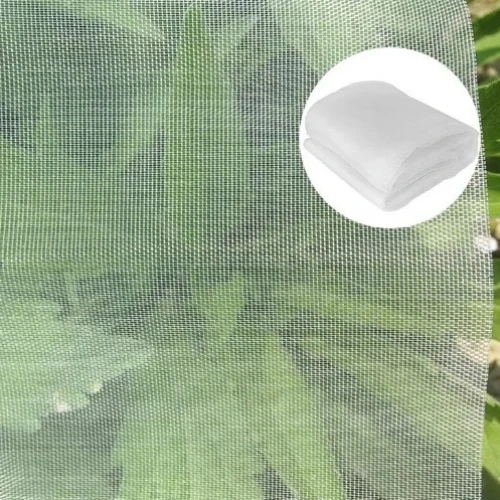-
 Afrikaans
Afrikaans -
 Albanian
Albanian -
 Amharic
Amharic -
 Arabic
Arabic -
 Armenian
Armenian -
 Azerbaijani
Azerbaijani -
 Basque
Basque -
 Belarusian
Belarusian -
 Bengali
Bengali -
 Bosnian
Bosnian -
 Bulgarian
Bulgarian -
 Catalan
Catalan -
 Cebuano
Cebuano -
 China
China -
 Corsican
Corsican -
 Croatian
Croatian -
 Czech
Czech -
 Danish
Danish -
 Dutch
Dutch -
 English
English -
 Esperanto
Esperanto -
 Estonian
Estonian -
 Finnish
Finnish -
 French
French -
 Frisian
Frisian -
 Galician
Galician -
 Georgian
Georgian -
 German
German -
 Greek
Greek -
 Gujarati
Gujarati -
 Haitian Creole
Haitian Creole -
 hausa
hausa -
 hawaiian
hawaiian -
 Hebrew
Hebrew -
 Hindi
Hindi -
 Miao
Miao -
 Hungarian
Hungarian -
 Icelandic
Icelandic -
 igbo
igbo -
 Indonesian
Indonesian -
 irish
irish -
 Italian
Italian -
 Japanese
Japanese -
 Javanese
Javanese -
 Kannada
Kannada -
 kazakh
kazakh -
 Khmer
Khmer -
 Rwandese
Rwandese -
 Korean
Korean -
 Kurdish
Kurdish -
 Kyrgyz
Kyrgyz -
 Lao
Lao -
 Latin
Latin -
 Latvian
Latvian -
 Lithuanian
Lithuanian -
 Luxembourgish
Luxembourgish -
 Macedonian
Macedonian -
 Malgashi
Malgashi -
 Malay
Malay -
 Malayalam
Malayalam -
 Maltese
Maltese -
 Maori
Maori -
 Marathi
Marathi -
 Mongolian
Mongolian -
 Myanmar
Myanmar -
 Nepali
Nepali -
 Norwegian
Norwegian -
 Norwegian
Norwegian -
 Occitan
Occitan -
 Pashto
Pashto -
 Persian
Persian -
 Polish
Polish -
 Portuguese
Portuguese -
 Punjabi
Punjabi -
 Romanian
Romanian -
 Russian
Russian -
 Samoan
Samoan -
 Scottish Gaelic
Scottish Gaelic -
 Serbian
Serbian -
 Sesotho
Sesotho -
 Shona
Shona -
 Sindhi
Sindhi -
 Sinhala
Sinhala -
 Slovak
Slovak -
 Slovenian
Slovenian -
 Somali
Somali -
 Spanish
Spanish -
 Sundanese
Sundanese -
 Swahili
Swahili -
 Swedish
Swedish -
 Tagalog
Tagalog -
 Tajik
Tajik -
 Tamil
Tamil -
 Tatar
Tatar -
 Telugu
Telugu -
 Thai
Thai -
 Turkish
Turkish -
 Turkmen
Turkmen -
 Ukrainian
Ukrainian -
 Urdu
Urdu -
 Uighur
Uighur -
 Uzbek
Uzbek -
 Vietnamese
Vietnamese -
 Welsh
Welsh -
 Bantu
Bantu -
 Yiddish
Yiddish -
 Yoruba
Yoruba -
 Zulu
Zulu
steel wire cloth
The Versatility and Applications of Steel Wire Cloth
Steel wire cloth, often referred to as wire mesh or wire fabric, is a versatile material that has found applications across various industries due to its unique properties. Composed of stainless steel or carbon steel wires, this fabric is produced through a process of weaving, welding, or knitting, resulting in a durable, strong, and flexible product. Its reliability and effectiveness make it an essential component in numerous applications ranging from industrial processes to everyday use.
Properties of Steel Wire Cloth
One of the key characteristics of steel wire cloth is its strength. The inherent toughness of steel allows it to withstand significant wear and tear, making it suitable for environments where durability is paramount. Additionally, steel wire cloth can be manufactured in different gauge sizes and mesh openings to cater to specific filtering or screening needs. The ability to customize these parameters makes it an excellent choice for specialized applications.
Another noteworthy property is its resistance to corrosion, especially when produced from stainless steel. This feature makes steel wire cloth ideal for use in environments that are prone to moisture or chemical exposure. Furthermore, the balanced mix of flexibility and rigidity allows it to be formed into various shapes without compromising its structural integrity.
Applications in Industry
Steel wire cloth is widely utilized in the manufacturing and industrial sector. Its primary application is in filtration and separation processes, where it is used to sift, filter, and grade materials. For instance, in the food and beverage industry, steel wire cloth ensures that products are free from contaminants, thus maintaining quality and safety. It is commonly found in applications ranging from sieving flour to filtering juices.
In the construction industry, steel wire cloth serves as reinforcement in concrete, improving its tensile strength and durability. It is often used in the form of welded wire mesh, which provides a consistent distribution of strength across various load-bearing applications. Additionally, architects and designers incorporate steel wire cloth into building facades and interior designs for aesthetic and functional purposes.
steel wire cloth

Environmental and Agricultural Uses
Beyond industrial applications, steel wire cloth is also beneficial in environmental conservation efforts. It is employed in the filtration of water and air, aiding in the removal of particulates, sediments, and other harmful contaminants. Its use in environmental projects, such as erosion control and sediment filtration for stormwater management, contributes to safeguarding natural resources.
In agriculture, steel wire cloth finds applications in nurseries, gardening, and animal husbandry. It can be used to create enclosures for livestock, preventing predators from accessing vulnerable animals. Furthermore, it serves as a support structure for climbing plants, demonstrating its multi-faceted benefits in agricultural settings.
Household and DIY Uses
The versatility of steel wire cloth extends into household applications as well. Many DIY enthusiasts utilize it for creating projects that require a strong, durable material. It can be fashioned into screens, partitions, or even art pieces. Additionally, it serves as a material for making functional items such as drawer dividers, pest deterrents, or even garden trellises.
Conclusion
In conclusion, steel wire cloth is a multifaceted material that stands out for its strength, durability, and versatility. Its applications span across various sectors, including industry, construction, agriculture, and household projects. Whether used for filtration, reinforcement, or decorative purposes, steel wire cloth provides reliable solutions tailored to meet specific needs. As industries continue to evolve and seek materials that offer sustainability and performance, steel wire cloth will undoubtedly remain a foundational choice, underpinning the functionality and safety of numerous applications in our daily lives. Its role in enhancing efficiency while minimizing environmental impact further solidifies its position as an indispensable material in a wide array of contexts.
-
Shipping Plastic Bags for Every NeedNewsJul.24,2025
-
Safety Netting: Your Shield in ConstructionNewsJul.24,2025
-
Plastic Mesh Netting for Everyday UseNewsJul.24,2025
-
Nylon Netting for Every UseNewsJul.24,2025
-
Mesh Breeder Box for Fish TanksNewsJul.24,2025
-
Expanded Steel Mesh Offers Durable VersatilityNewsJul.24,2025











